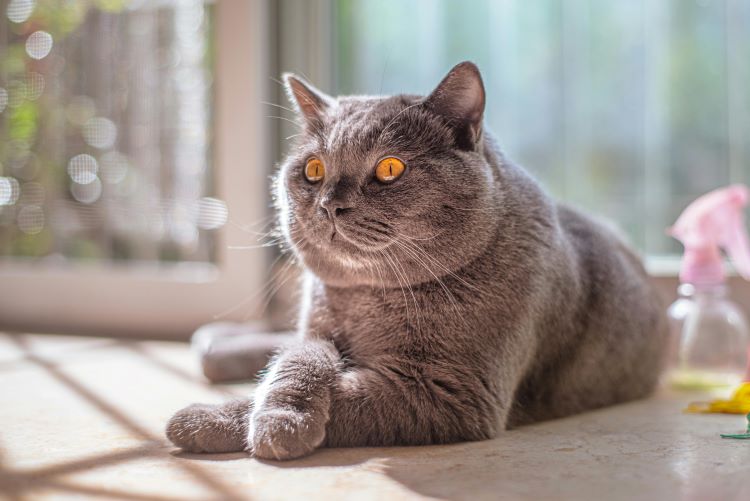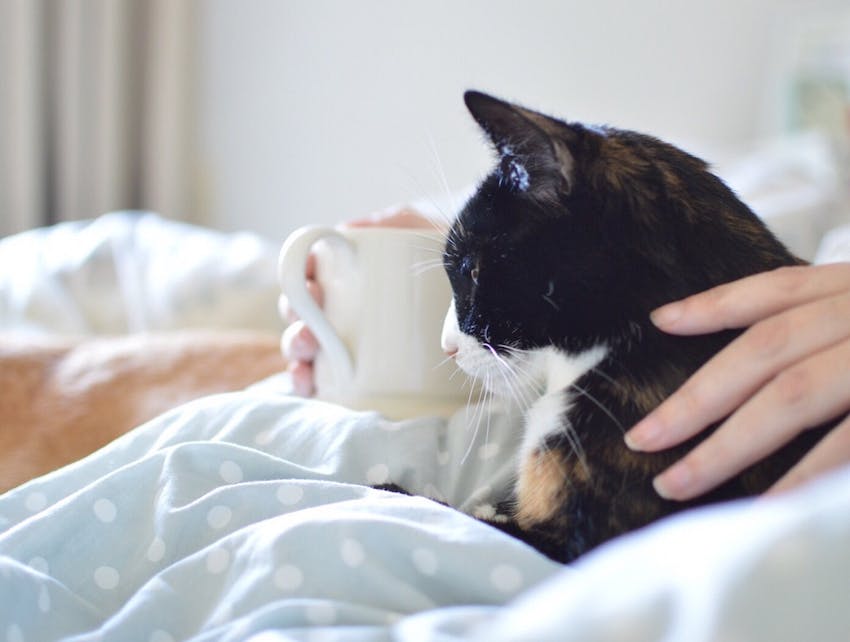Ready to help treat your pet to a healthy life?
Your Cat's Body Language Explained
By : Kelli Rascoe & Trupanion Staff | Updated Jan 30, 2025

Cats are famously independent animals, but they do frequently play and socialize with others. And when your cat is interacting with you, a family member, or other pets, it’s crucial to be able to read their body language.
But do you always know what your cat is trying to tell you? They may not be able to speak, but their physical movements and mannerisms are often ways of communicating. Having the ability to understand what your kitty’s physical behavior is telling you will help keep everyone involved safe and encourage future feline interaction. Here’s what you need to know!
Why you should pay attention to feline body language
Cats have different ways of expressing themselves than humans (and dogs, for that matter). This can lead to confusion on both ends, which can cause unnecessary stress and even safety risks. So, while it may seem a bit silly, taking the time now to learn more about feline body language can help prevent accidents. Doing so can also help strengthen your bond with your cat and make you both feel more at ease.
“Cats are more subtle than dogs in terms of the ways that they communicate, so it is important to watch a cat’s cues carefully and then respond appropriately,” says Dr. Caroline Wilde, DVM. “Cats may lash out when scared, so it is important to watch your cat for cues to avoid injury. Understanding normal behavior can help detect abnormal behavior sooner, thereby allowing earlier detection of sickness or injury.”
On top of this, every cat has a unique way of communicating through their body language. Your cat may respond differently or communicate based on their personality in addition to their breed and environment. If you’re a new cat owner, you might still be trying to understand and get to know your furry friend. It might take some time to learn your cat’s body language and be able to tell when something’s off.

11 Types of cat body language and what they mean
Have you ever looked at your cat and wondered what they were doing? Or if their posture or stance indicates they’re in pain? According to Wilde, the following are common forms of cat body language and indicators of what your cat may be saying:
- Posture — This includes the positioning of a cat's ears, eyes, fur, legs, and tail. All can be used to communicate, and abrupt changes can mean a sudden switch in mood.
- Purring — Purring is often a sign that a cat is content, but they may also purr when they are anxious.
- Head butting and rubbing — These can both show a cat is hungry, playful, or seeking affection.
- Crouching and leaning back — This can indicate a cat feels threatened.
- Grooming — Regular maintenance activity is normal, but it may decrease when a cat is sick or stressed.
- Dilated pupils — Although a cat may not do this consciously, their pupils can dilate in response to stress hormones released in the body.
- Hiding — Some cats routinely like to hide. But if your usually social pet starts hiding, it could be a sign of fear or sickness.
- Arching their back — If a cat arches their back, they may feel threatened and are getting ready to fight or flee.
- Poofing their fur — Fluffed up tail and/or back fur? Cats often do this in an attempt to appear bigger to any potential threat.
- Crouching — Crouching down with ears flat can mean a cat feels threatened.
- Tail wagging — Cats typically don’t wag their tails beyond the occasional swish. If their tail is twitching or wagging, they could just be really excited and be getting ready to pounce. Or, it could indicate stress or anxiety.
Learn more about cat behavioral changes to watch for.

What about vocalizations?
Many cats use sounds as well as body movements to express themselves. Pay close attention to both to better understand your pet.
- Howling — Also called yowling, this can mean a cat is stressed, anxious, or in pain.
- Meowing — This can show when a cat is hungry or seeking attention, especially when they walk around meowing.
- Hissing — Some cats hiss when startled, but generally speaking, it’s a sign of discontent or aggression.
- Growling — It’s not just dogs who can growl! When a cat does it, it’s almost always a sign of them feeling threatened.
Getting to know your cat’s mannerisms
There are a number of reasons why your cat might exhibit one behavior over another. Consider your surrounding environment and if anything new has been introduced or changed when it comes to understanding cat body language. For example, a new home or move can easily affect your cat’s mood or behavior.
Depending on your cat, they might not show all common signs of feline stress, or only just a few. Regardless, you should seek the care of your veterinarian and they can provide a treatment plan and recommend next best steps.
At the end of the day, you just want your cat to be happy and healthy. Taking the time to understand all of the different meanings of common cat body language can help you boost your cat’s well-being.
“When a pet owner correctly interprets a cat’s body language, it can help build the human-pet bond,” says Wilde. “Naturally, the bond between you and your cat is very special, and that starts with understanding the way they communicate.”

Noticing behavior is just one part of cat care
Getting to know your cat’s behavior and being able to spot any alarming changes will help you better support their overall health and well-being. But it doesn’t stop there. You’ll need to keep up with routine veterinary care — do not be afraid to speak up when you’ve noticed changes in your pet’s habits, even if they’re minor. And because you can’t predict what kinds of surprises will come your pet’s way, it’s also a good idea to consider signing up for cat health insurance.
Learn more about the benefits of pet insurance and how it can fit into your overall strategy for your cat’s care.
